 |
 |
 |
| |
Low treatment rates and suboptimal treatment completion rates to HCV therapy: A real world analysis of a large US cohort
|
| |
| |
Reported by Jules Levin
DDW DDW - Digestive Disease Week 2014, May 4-6, 2014, Chicago, Illinois, United States
Vutien P, Kim Y, Brooks L, Livornese R, Nguyen MH
Philip Vutien, MD
Rush University Medical Center
Department of Internal Medicine
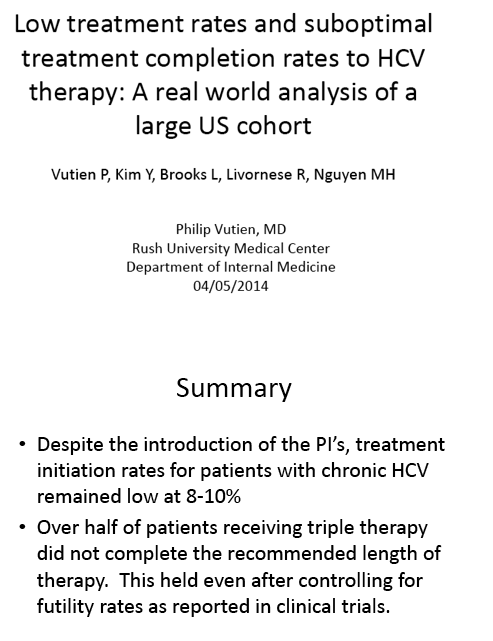
Program Abstract
Purpose: Two protease inhibitors, telaprevir (T) and boceprevir (B), received market approval for treatment of HCV in 2011. Despite improvement in sustained virologic response (SVR) over the previous standard of care peginterferon and ribavirin (P+R), interferon-related side effects with triple therapy impact the course of HCV treatment. These side effects contribute to much higher discontinuation rates and consequently negatively impact SVR. The primary objective of this study is to measure overall treatment rates and treatment completion rates of anti-HCV therapies in treated patients.
Methods: This was a retrospective database study that analyzed the use of P+R from January 2009 - May 2011 (prior to introduction of protease inhibitors [PI]) and triple regimen combinations from June 2011 - June 2012 (after introduction of PIs) using data from a large cohort of commercial and Managed Medicare US insured patients. Patients were selected for study inclusion based on HCV diagnostic criteria and initiation of anti-HCV therapy. A total of 3,732 patients were analyzed: 2,674 P+R in the pre-PI period, and 723 T+P+R, 157 B+P+R, 178 P+R in the post-PI period.
Results: The introduction of PIs did not substantially change the treatment rates and they remained low at approximately 10-11% for those with commercial insurance and 8% for Medicare recipients (Figure 1). For patients on P+R on the pre-PI period, 88% remained on treatment by week 12 but 44% of patients discontinued therapy by week 24. Similar discontinuation rates were found for P+R in the post-PI period; and 62% had discontinued treatment by week 24. For patients on triple therapy, the steepest drop occurred between weeks 8 and 12 and over 40% of patients on T+P+R had discontinued treatment by week 12, and over 68% of patients had dropped out of therapy by week 24 (Figure 2). For patients on B+P+R, 75% discontinued therapy by week 24. Adjusting for discontinuation due to futility rule as reported by registration trials, (14% for T+P+R and 16% for B+P+R ), only 46% for T+P+R and 41% for B+P+R patients remained on therapy at 24 weeks . There was no significant difference in treatment completion rates by age, gender, or ethnicity.
Conclusions: Only approximately 8-12% of patients with chronic HCV infection received anti-HCV treatment both in the pre-PI as well as in post-PI era. Of those who were treated with triple therapy, after accounting for discontinuation rates due to futility rules as reported in registration trials, less than half remained on therapy beyond 24 weeks. The current analysis indicates that overall treatment rates for patients with chronic hepatitis C remain dismally poor even in the recent post-PI era, and that treatment completion to both dual and triple therapy regimens is suboptimal in the real-world clinical setting.
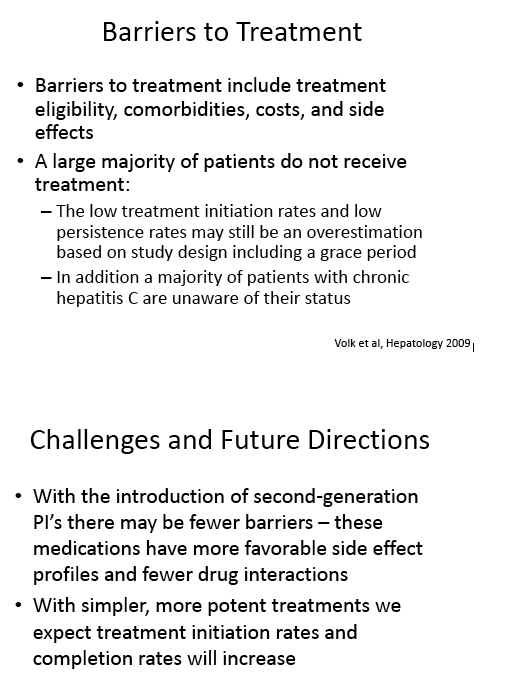


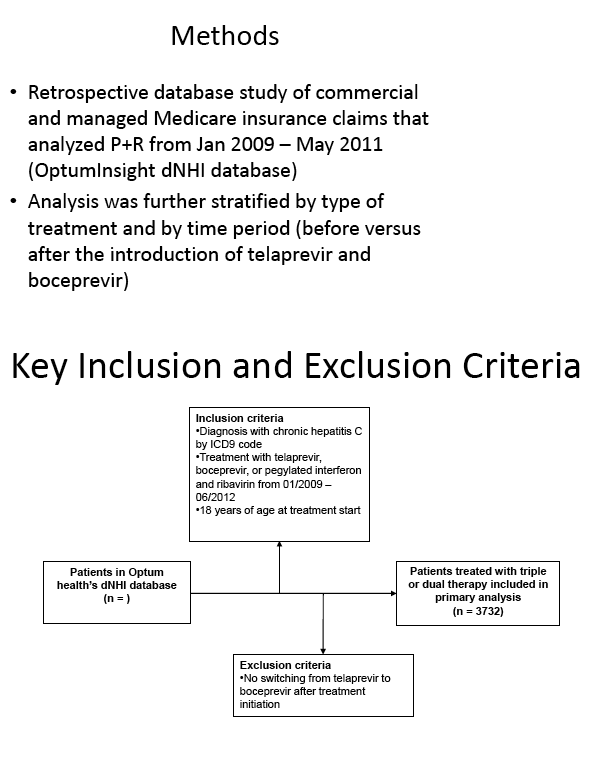
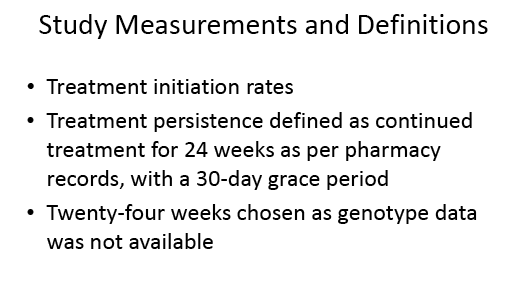
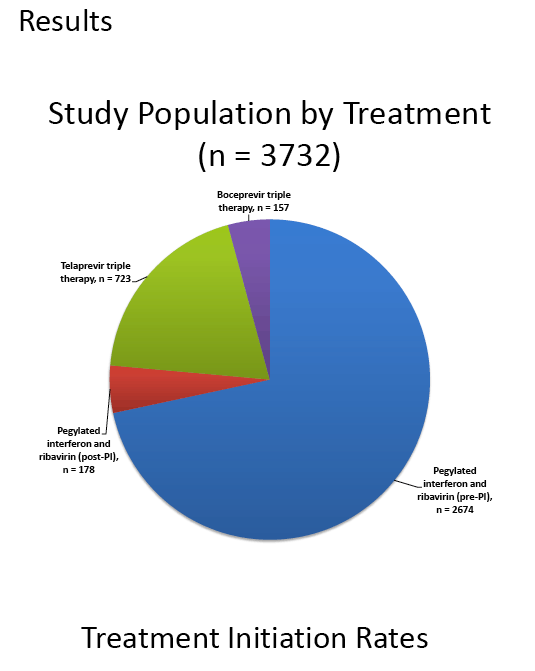
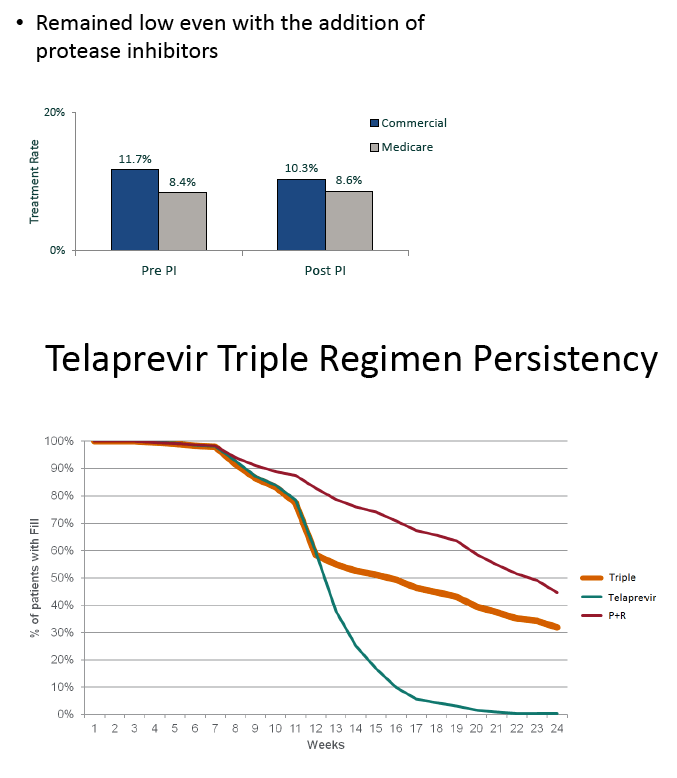
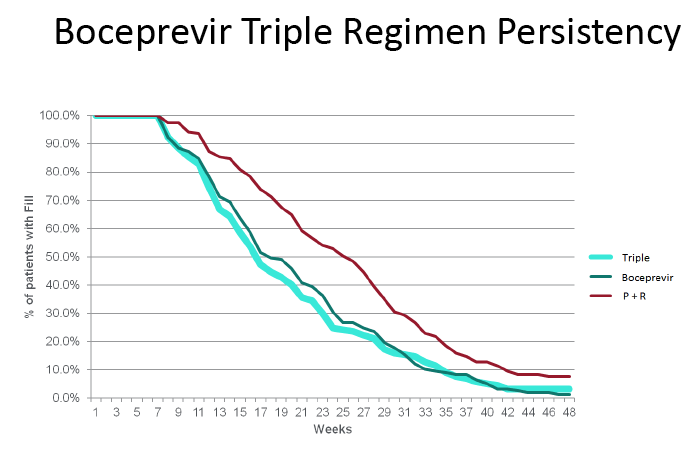
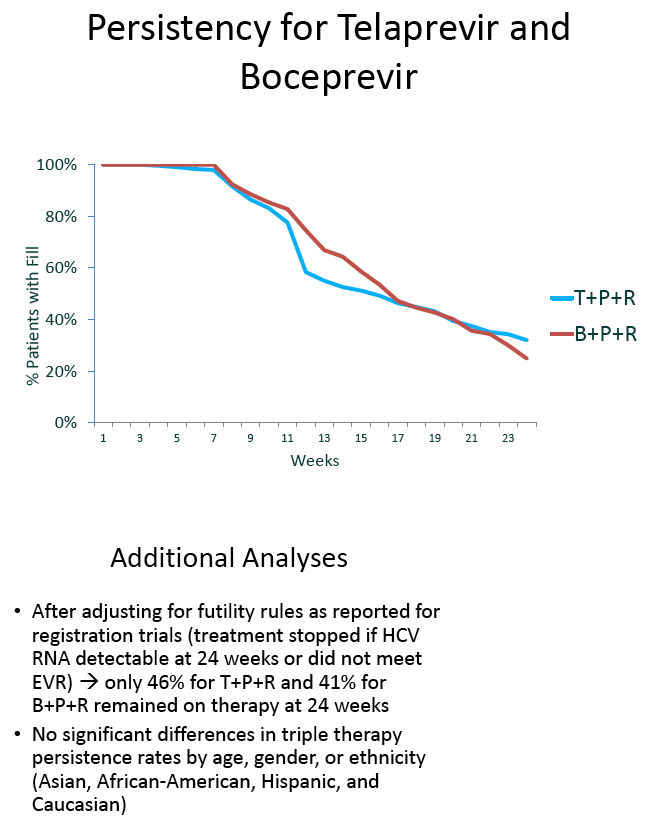
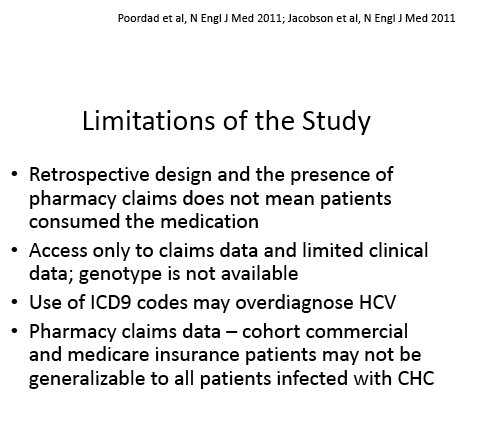
|
| |
|
 |
 |
|
|